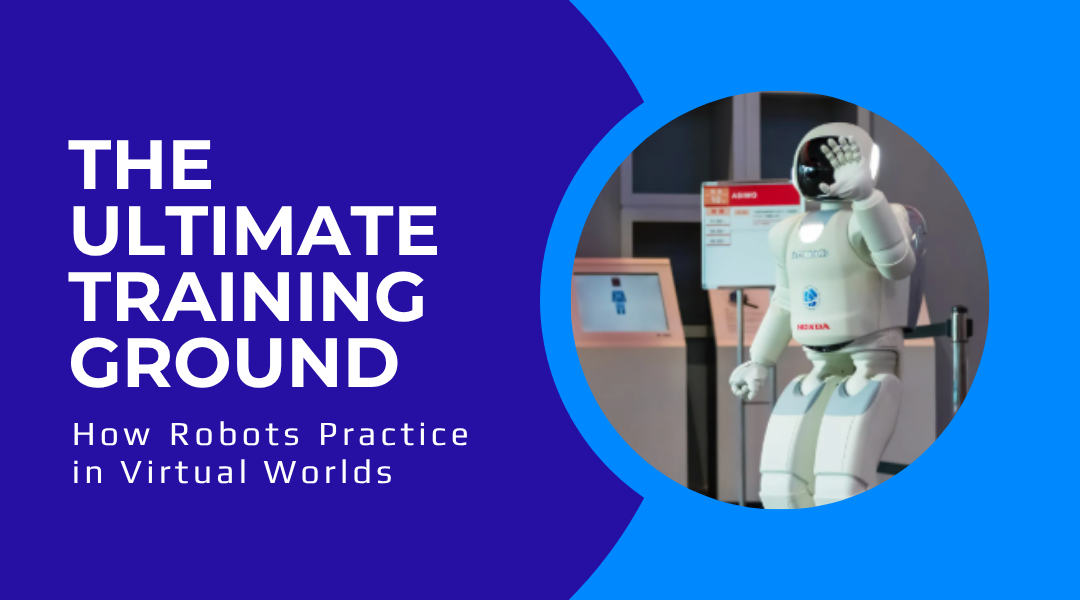Think about learning to ride a bike. You wobbled, you fell, you scraped your knees. It was a slow, sometimes painful process of trial and error. Now, imagine if you could have experienced every possible biking scenario—gravel, potholes, sudden obstacles—in a perfect, risk-free simulation where a fall didn’t hurt. You would have mastered it in a fraction of the time.
This is the revolutionary shift happening in robotics. The real world is a terribly inefficient and expensive classroom for a machine. The new, transformative classroom is a simulated universe.
Why the Real World Fails Robot Students
Training a robot in the physical world is a nightmare of logistics and cost.
- It’s Unbearably Slow: Programming a robot to navigate a warehouse by physically guiding it down every possible aisle combination could take months.
- It’s Destructively Expensive: Every mistake has a consequence. A miscalculation could mean a robot arm colliding with a shelf, causing thousands in damages and downtime.
- It’s Dangerously Incomplete: How do you safely train a robot for a rare but critical event, like a fire alarm blaring, lights failing, or a person collapsing in its path? In the real world, you can’t. These “edge cases” are often left untaught, creating robots that are brittle and unprepared for true chaos.
The old model of robotics was like teaching a student to be a doctor by only letting them read a textbook. The new model is giving them a million patients to diagnose in a perfect, virtual hospital first.
The Simulated Playground: A Universe of Infinite “What-Ifs”
The breakthrough is the creation of hyper-realistic digital twins—not just simple models, but living, breathing virtual replicas of factories, city streets, and even entire homes. Inside these simulated worlds, the rules of physics, lighting, and material properties are perfectly mimicked.
Here, we can unleash armies of virtual robots to learn by doing, at a scale and speed that was once science fiction.
- The Repetition Superpower: A delivery robot needing to learn a route can run it 10,000 times in a single afternoon. It experiences the route at dawn, at dusk, in pouring rain, and in blinding sun. It encounters virtual dogs, kids chasing balls, and construction barriers. Each iteration builds a deeper, more robust understanding.
- The Failure Advantage: This is the core of the magic. In simulation, failure is not a cost; it’s data. A robot can “crash” a virtual forklift into a virtual wall a thousand times. Each crash teaches its AI brain a little more about braking distance, weight distribution, and spatial awareness. It learns the concepts of momentum and friction, not just a pre-programmed command.
- Mastering the Unpredictable: Engineers can build scenarios that would be impossible or unethical to create in reality. They can simulate a sudden gust of wind for a drone, a power outage in a smart home, or a slippery spill on a hospital floor for a care robot. The machine learns to adapt its behavior to the chaos of real life.
From Virtual Lessons to Real-World Mastery
The knowledge gained in these simulations isn’t locked in the digital realm. It is directly transferred to the physical robot’s “brain”—its control algorithms. When a robot finally steps off the factory test floor and into a real operating room or a busy warehouse, it isn’t a novice. It’s a seasoned veteran.
This has profound implications for the machines that will soon share our world:
- The Truly Self-Driving Car: Before an autonomous vehicle ever navigates a real intersection, it has already merged into traffic millions of times in simulation. It has experienced every conceivable near-miss, learned to spot a child darting out between parked cars from a mile away, and practiced navigating detours. Its first real-world drive is, in fact, its billionth.
- The Capable Home Helper: A humanoid robot designed to assist with chores won’t learn in your kitchen. It will learn in a perfect digital copy of a kitchen. It will practice loading a virtual dishwasher millions of times, learning the delicate grip for a wine glass and the sturdy placement for a pot, long before it ever handles your china.
- The Agile Factory Worker: Industrial robots are no longer confined to a single, repetitive task. A simulated training allows one robot to be a “universal worker”—trained to assemble a car door, then seamlessly switch to packing boxes, because it has mastered both tasks in a virtual copy of the factory.
Conclusion: A Future Forged in Simulation
This shift to simulated learning is more than a technical upgrade; it’s a philosophical one. We are moving from building machines that simply execute commands to raising machine intelligences that learn from experience.
The goal is not to create perfect, error-free robots. The goal is to create resilient and adaptable partners. By allowing them to fail spectacularly and learn relentlessly in a boundless digital playground, we equip them with a form of common sense. They enter our lives not as fragile tools that break under unexpected conditions, but as robust collaborators, prepared for the beautiful, unpredictable complexity of the human world. The future of robotics is being built, tested, and perfected in a universe of ones and zeros, so it can serve us flawlessly in a world of flesh and blood.
